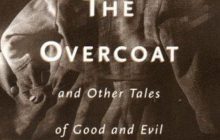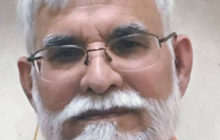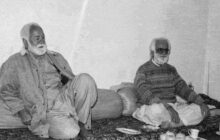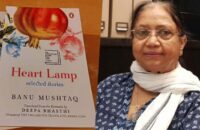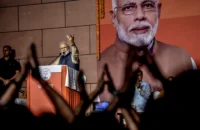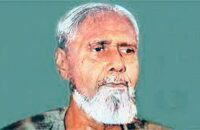Senge Hasnan Sering
CAA expedites the naturalisation process for persecuted non-Muslims of Pakistan, Afghanistan, and Bangladesh who are waiting to be declared as Indian citizens.
While adoption of the Citizen Amendment Act (CAA) of 2019 has led to violent protests in different parts of India; it has also generated a lively debate among Ladakhis about its possible fallout on Gilgit-Baltistan (G-B). Traditionally, G-B is that part of the state of Jammu Kashmir (J&K) being held by Pakistan. However, on 5 August 2019, G-B was rebranded as Pakistan-Occupied-Ladakh (POL) after a Constitutional amendment by the Indian Parliament led to the reorganisation of Jammu & Kashmir into two Union Territories, subsequently placing G-B with the Union Territory of Ladakh.
Since a large number of Ladakhi Muslims see CAA as an “anti-Muslim” law, therefore, they assume CAA could create hurdles for the Muslims of G-B with ambitions to re-integrate with India eventually. Further, the Shias of Ladakh are of the view that since Shias are a persecuted community in Pakistan, therefore, they should be included among the beneficiaries of CAA. This way, they believe, the Shias of G-B, who make up for more than three-fourth of the native population, will have no hurdles acquiring Indian citizenship once India regains control of the territory.
Let’s clarify a few myths about the Citizen Amendment Act of 2019. CAA expedites the naturalisation process for the persecuted non-Muslims of Pakistan, Afghanistan, and Bangladesh who are waiting for years to be declared as Indian citizens. Many such applicants risk deportation and could be subjected to torture, conversion and homicide in their country of origin. The way CAA helps is that it removes the tag of “illegal immigrants” from such applicants as people arriving in India illegally lack the right to apply for citizenship.
Secondly, it fast-tracks the naturalisation process for the minorities by reducing the waiting time from 11 to five years. CAA is applicable only to those individuals who are currently living in India and entered the country before 31 December 2014. This means, it is a one-time courtesy permit and will not benefit the minorities currently living outside India or those who arrived in India after 2014.
To address the concerns of the Ladakhis vis-a-vis Gilgit-Baltistan, CAA does not apply to Indian citizens. CAA alters some clauses in the fourth category of the sixth section of the Indian Citizenship Act, which deals with the naturalisation process. The natives of G-B do not fall under that category since a person or parents of a person native to G-B, irrespective of religious or ethnic background, have already been declared as Indian citizens. CAA is not a recurrent law and has a cutoff date and therefore doesn’t impact the eventual re-integration of the natives of G-B with India. CAA also has no bearing on the second or third generation natives who were born outside G-B or have lost permanent residential rights in G-B. Such persons could become Indian citizens through descent or registration. Last but not the least, CAA has no bearing on the naturalisation clause that evaluates citizenship for the residents of a territory that comes into India’s control after transfer of land through war or peaceful means, since G-B is already a Constitutional Indian territory.
To address the apprehensions of Pakistani Muslims, CAA neither affects existing naturalisation laws nor delays ongoing naturalisation applications, nor bars Muslims of any part of the world from applying for Indian citizenship in future. The Indian Constitution, with or without CAA, does not discriminate against Muslims who desire to be Indian citizens and this includes the Muslims of Pakistan and Bangladesh. In the same way, CAA does not undermine or interfere with the existing rules for asylum and Muslims should be able to apply for asylum per previous methods.
Some Muslims accuse BJP of favouring Hindus and call CAA a “Hindu Act”, which “automatically” grants citizenship to foreign Hindus upon arrival. The reality is that CAA treats all religiously persecuted minorities as equal and does not give automatic citizenship to anyone. For instance, minorities benefiting from CAA are already residing in India and have been waiting for years to gain their basic rights, including citizenship.
As a Hindu Act, CAA should have accommodated tens of thousands of Hindu economic migrants, which it doesn’t, since economic migrants, Muslim or non-Muslim, do not come in the category of religiously persecuted people. This is why the Muslims of Bangladesh, Pakistan and Afghanistan, who have arrived in India as economic migrants, are not included among the beneficiaries of CAA. However, all these immigrants can still apply for Indian citizenship as CAA does not obstruct those processes.
As a Hindu Act, CAA could also have accommodated the Tamil Hindus of Sri Lanka, who are currently staying in camps in India. However, they have been excluded from CAA beneficiaries even though they were persecuted in their homeland. Indian government believes that Tamils seek a separate nationhood and geographical separation of their territory from Sri Lanka. Since Tamil Hindus are in exile for consequences of ethno-nationalist movement, therefore they cannot be placed with religiously persecuted communities. This addresses the issue of whether Baloch, Sindhis or Pashtuns struggling for separate homelands and persecuted in Pakistan should benefit from CAA. These communities, like the Sri Lankan Tamils or the Burmese Rohingya, are trying to establish their own countries and not trying to claim India as their country or permanently settle in other countries.
Secondly, the Shias, Ahmadiyas and Sufis cannot be beneficiaries of CAA since they declare themselves as Muslims, and not religious minorities. They come from predominantly Muslim countries which guarantee preferential treatment and freedoms to its Muslim citizens. The Hazaras of Pakistan and Afghanistan, even though a racial minority, still claim to be part of the Muslim nation and are therefore not added to the CAA beneficiaries. India is not a theocracy and it is not the job of the Indian government to define a “Muslim”. Since Shias or Ahmadiyas call themselves Muslims, therefore, the Indian government cannot lump them with the non-Muslim minorities.
Nonetheless, the persecuted Shias and members of other minor Muslim groups could still apply for Indian citizenship or asylum. India has granted political asylum to tens of thousands of Afghans, Iranians, Arabs, Tibetans, Ugandan and Rohingya Muslims and therefore should not be shy of accommodating Shias, Hazara or Ahmadiyas in the future. More than 600 Muslims got Indian citizenship during the last five years of BJP rule and CAA will not obstruct or delay this ongoing process.
Ladakhi Muslims also fear that if India were to acquire control of G-B today, then CAA could lead to deportation of a vast number of Muslims currently settled and working in G-B. The fact is, CAA does not deal with the deportation process of illegal settlers, immigrants or alien residents, be they Muslim or otherwise. The settlers who have arrived in G-B from Pakistan, Afghanistan or China would be dealt under a different law, called Foreigners Acts and CAA has no bearing on that process.
The eventual reintegration of G-B with India will undeniably create challenges for the Pakistani, Afghan and Chinese settlers who arrived in G-B after 15 August 1947, since all of them are illegal immigrants or aliens. A vast majority of natives of G-B expect these illegal settlers to return to their respective countries.
Some seven decades ago, the United Nations Security Council asked Pakistan to remove all its nationals from G-B, however, Pakistani authorities refused to comply with the Council’s unanimous decision. Settling Pakistanis, Afghans or Chinese in G-B is a breach of the agreement that the Pakistani government signed with the United Nations and India.
Pakistan encourages illegal settlements in G-B to help religious and racial demographic engineering programs and this has come at the cost of the well-being of the locals. The presence of settlers, who compete with the G-B locals for jobs, services, natural resources and land, complicates the Kashmir issue and restricts the stakeholders from finding an amicable solution to the chronic impasse. Further, the presence of Chinese settlers in G-B makes People’s Republic of China a stakeholder in the game and strengthens China’s claim on parts of Ladakh.
CAA has evolved into a potent electoral tool for the opposition parties to capitalise on the fears and gullibility of the Indian Muslims. More importantly, Pakistan is trying to use CAA as an effective strategic weapon to weaken and isolate India. A lack of understanding of CAA is compelling many Pakistani activists, who have struggled for decades for the rights of Hindu or Christian minorities, to stand with their oppressors. Under the circumstances, fact-based conversations have taken a backseat, unnecessarily jeopardising the survival of persecuted non-Muslims who have waited for decades to become Indian citizens.
Ladakhis, as citizens of the newly created Union Territory, should refrain from getting embroiled in zero-sum debates that divide and weaken them along ethnic lines. Almost 90% of Ladakh’s population is made up of Shias and Buddhists and they need to find a way to help move the process of sustainable development and cultural preservation. Discord among Ladakhis will only delay reintegration of G-B with India.






